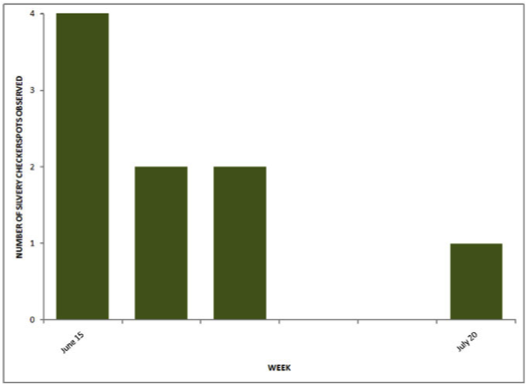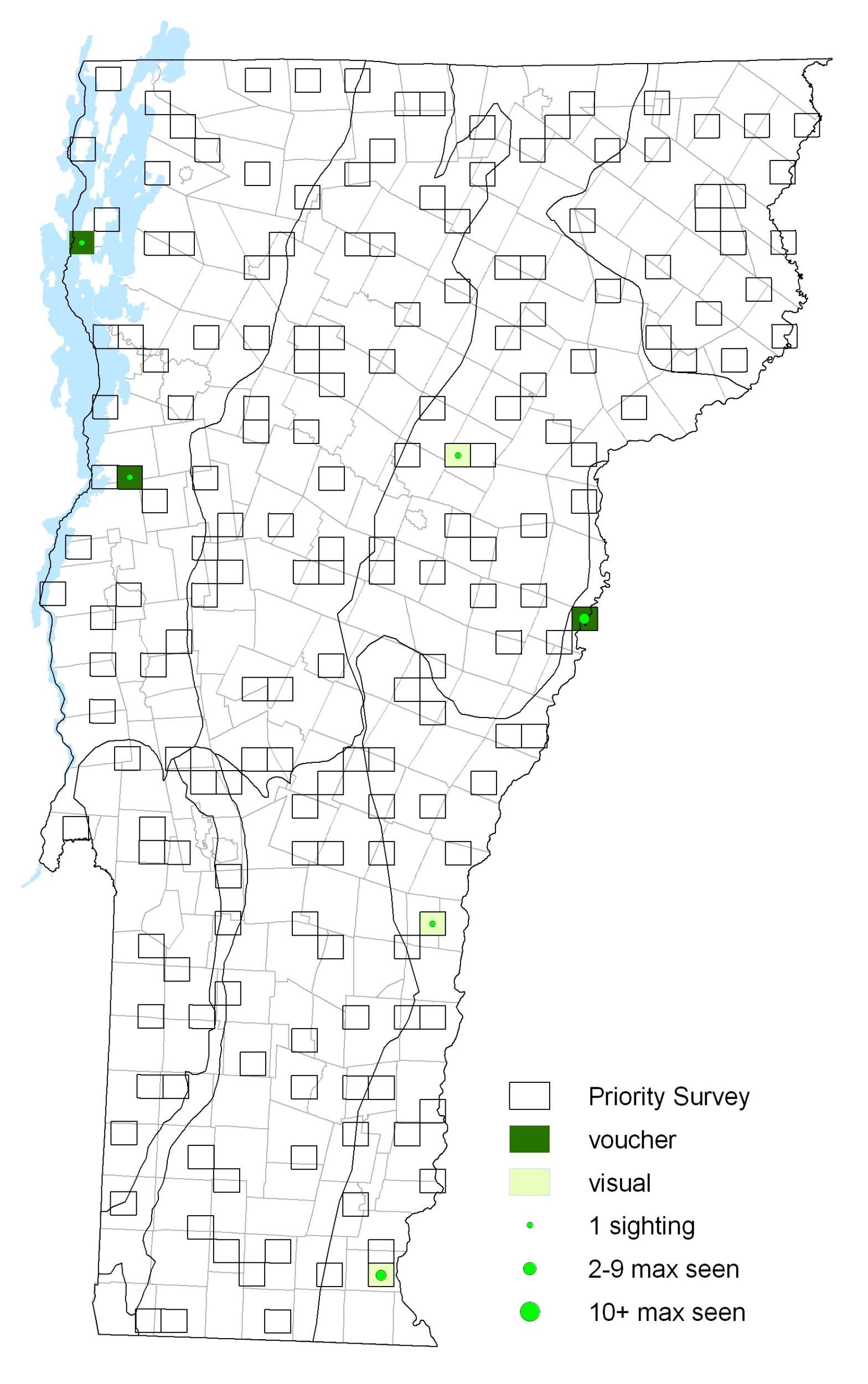|
Resident Conservation Status North American Range |
Despite being somewhat of a generalist, the Silvery Checkerspot is local, sparse and perhaps in decline in the region. Even Scudder (1889) wrote that ” in New England it is a very rare insect…” and he had collected in both New Hampshire and the Adirondacks in New York. There are no theories as to its limited populations or reason for suspected decline.
Identification
The largest of the checkerspots in our region. It can be confused with Harris’ Checkerspot and Pearl Crescent. Upperside is pale yellow-orange with dark borders and markings. Hindwing above and below has some white-centered submarginal spots; hindwing below is pale with a large white crescent at the margin.
Flight
Apparently June and July in New England as well as during VBS. Extreme dates: 1 June 1989 in Colchester (M. Sabourin), 4 July 1989 in North Hero (J. Hedbor), and 20 July 2002 in Marshfield (M. Schumacher).
Distribution and Habitat
Rarely recorded during VBS, but most records are from valley locations. They prefer moist, open areas such as wet meadows and streamsides, however, they are known to frequent roadsides, forests, dry ridges and even urban parks. They use composites as larval hostplants including asters (Aster), sunflowers (Helianthus), and Black-eyed Susan (Rudbeckia hirta). A specimen from Milton in 1993 reared on Wood Aster (Eurybia divaricata) (J. Hedbor). Reported nectaring White Clover and Fleabane during VBS. Also puddle and visit dung.






